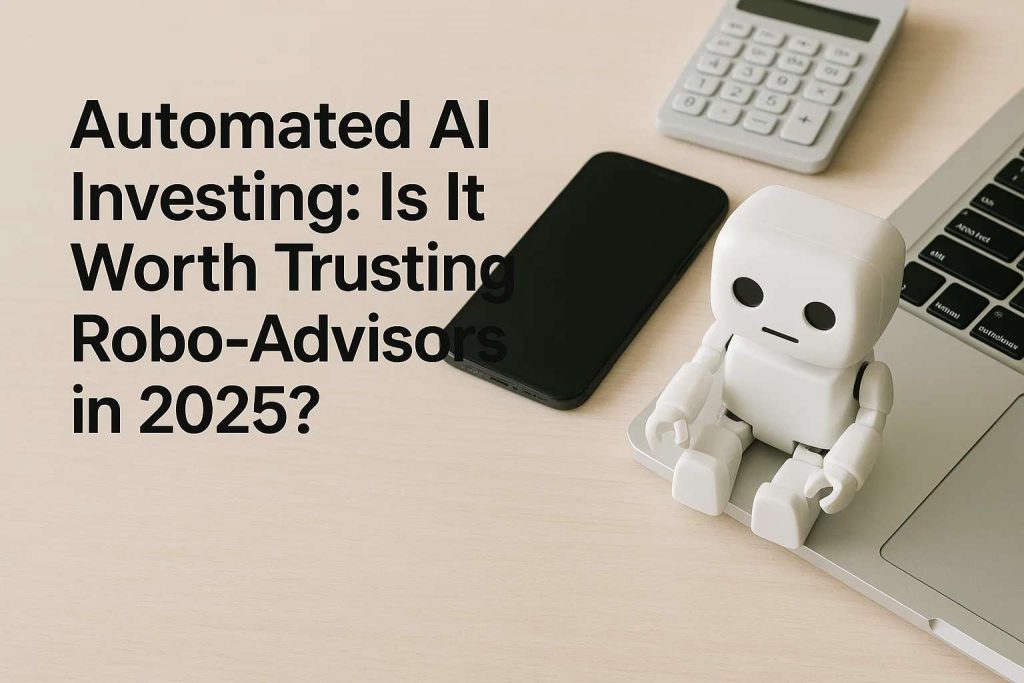In the fast-evolving world of investments, the year 2025 presents us with an intriguing question: should we place our trust in robo-advisors? As technology advances, the realm of financial management is increasingly automated, and these digital advisors have gained significant attention.
While some enthusiasts applaud the convenience and efficiency they offer, others remain skeptical about relying entirely on technology for their financial planning. In this blog post, we’ll explore the pros and cons of entrusting your monetary future to automated intelligence.
The rise of intelligent investment platforms

With the advancement of artificial intelligence (AI), the landscape of intelligent investment platforms has been evolving rapidly. This transformation has democratized access to sophisticated financial tools that were previously exclusive to large institutions. Such platforms represent a paradigm shift, replacing the human advisor with an unprecedented power for data processing.
These solutions utilize complex algorithms to analyze massive datasets—trillions of data points, including price histories, news, economic reports, and even social media sentiment. The goal is to provide users with highly personalized investment strategies that are optimized for their risk profiles. AI can identify patterns and correlations that would be invisible to human analysis, suggesting asset allocations and buy/sell timings based on probability and historical data.
The accessibility and low fees associated with these services are a major draw, especially for the novice investor. Robo-advisor platforms offer diversified portfolios and automatic rebalancing at a fraction of the cost of a traditional manager. This facilitates market entry and encourages long-term investment discipline.
However, reliance on this technology raises critical questions. The lack of human intuition in investment decisions is a significant concern, particularly regarding its ability to respond to unpredictable market fluctuations. “Black swan” events (unpredictable, high-impact events like the 2020 pandemic or geopolitical crises) demonstrate the limitations of models that primarily rely on historical patterns.
The effectiveness of these platforms is intrinsically dependent on their programming and design. While they excel at processing historical data, their predictive capabilities in radically new scenarios still face challenges. It is essential to understand the underlying mechanisms behind these algorithms to assess their potential value. The central question is: are they truly capable of adapting to unforeseen economic developments, or are they limited by their initial programming? Investor confidence rests on the promise that AI can not only analyze the past but also react intelligently and opportunely to an uncertain future.
Understanding the algorithms behind digital advisors
Digital advisors rely on complex algorithms that crunch numbers and analyze trends to offer investment advice. These systems use machine learning to adapt to new data, aiming to enhance decision-making over time. However, one should be cautious about their limitations. Algorithms excel at data analysis but may overlook qualitative factors vital for nuanced investment strategies.
The key lies in continuously improving these algorithms to incorporate a broader range of market variables. For investors, recognizing the strengths and weaknesses of digital advisors is crucial. Balancing algorithm-driven insights with human judgment might be the optimal approach for crafting a resilient investment strategy that can thrive in diverse market conditions.
Maximizing returns with automated guidance
Automated platforms can dramatically streamline the investment process, offering diversified portfolios tailored to individual risk profiles. Their efficiency and scalability allow for more frequent portfolio rebalancing, potentially leading to improved returns. By leveraging data, they offer insights that might not be immediately apparent to human advisors.
However, achieving maximum returns is not just about automation. The investor’s role remains critical, as setting clear goals and regularly reviewing performance are essential. Automated systems can serve as powerful tools, but proactive oversight is necessary to ensure they align with broader financial objectives. A harmonious blend of automation and human oversight can lead to superior outcomes.
Balancing technology and human intervention in finance
Incorporating technology into investment strategies requires a balanced approach. While automation offers significant efficiencies, human insight ensures that investments remain aligned with changing personal and economic circumstances. Investors should view robo-advisors as complementary to traditional financial planners rather than replacements.
Embracing a hybrid model that leverages the strengths of both technology and financial expertise can enhance the overall investment experience. By staying informed about technological advancements, investors can make more strategic decisions, confidently navigating a path that blends innovation with time-tested financial wisdom.
Conclusion
Considering the rapid advancements in automated financial tools, determining whether to trust them for significant monetary decisions is crucial. While digital advisors present a compelling case for efficiency and accessibility, investors must weigh these benefits against potential pitfalls. Understanding their limitations and consciously deciding where human intervention is necessary can lead to more informed financial choices.
As the world of investments continues to evolve, embracing a blend of digital innovation and human expertise promises a balanced and informed approach to managing one’s financial health. In 2025, savvy investors will likely find value in integrating both elements to achieve their long-term financial goals.


